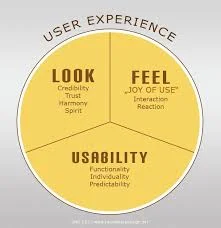Meditation—science tells us—can
reduce stress,
control anxiety,
promote emotional health,
enhance self-awareness,
lengthen attention span,
reduce memory loss,
fight addiction,
improve sleep,
control pain,
decrease blood pressure,
improve listening, and
generate kindness.
All good.
Most of us imagine meditation as a very deep, quiet, private, eyes-closed, rejuvenating experience, maybe enhanced with calming music, candles, aroma therapy, and a special place where we can melt our distress in cosmic quiddity.
Yes, eyes-closed, private meditation can seriously help us to heal.
But then, at some point, we have to open our eyes, reenter the crucible of complex existence and deal with—others.
Wasn’t it Garcin, in Sartre’s play NO EXIT, who exclaims to Inez and Estelle, “HELL—IS OTHER PEOPLE”?
In zen practice, there is sitting Zen (zazen), eyes slightly open, but there is also walking Zen (kinin), eyes more open.
How about an additional EYES-WIDE-OPEN kind of meditation we can do every day, at work?
Our everyday writing at work, which is often considered an irritating part of what we must do every day, can be that kind of satisfying, healing meditation—I prefer the word MINDFULNESS. Here’s how….
Today I’m thinking about the act of organization in writing and how it can function like a recipe from designing through drafting and review/editing.
I have developed and advocate for a radically reader-focused approach to teaching workplace writing (what’s usually called Business/Technical/Professional Writing in colleges), an approach that focuses on very specific skills for
generating useful information for a real reader who needs the information (not a teacher),
organizing the information logically and usually “deductively”—main point first,
using document design to make documents easy for readers to navigate, and
crafting a clear, concise, plain English style through management of paragraphs, sentences, word choices, and mechanics.
I call this approach the HOCs and LOCs approach: HOCs=Higher Order Concerns (CONTENT, ORGANIZATION, DOCUMENT DESIGN); LOCs=Lower Order Concerns (Paragraphs, Sentences, Word Choices, Mechanics). I think of this as a systems approach to thinking about and teaching workplace writing.
The usefulness and readability of any document is generated through these 7 HOCs & LOCs.
In this post, I’m considering the “system” of ORGANIZATION: beyond mere genre requirements (letters, memos, proposals, etc.), what underlying organizational principles should students learn, organizational principles that would apply to any kind of workplace document?
ZERO CONTENT should be the goal of all practical writing.
That concept is most succinctly expressed in the following mathematical statement: zC = RQ - WA, where zC=ZERO CONTENT; RQ = Reader’s Questions; WA = Writer’s Answers.
If you teach (practical) writing at any level (in this swatch I include professional writing of any kind and college writing, as well as its antecedents from first grade onward), I think you should SPOTLIGHT (floodlight) the critically important writing skills for generating useful content for an interested reader.
Useful content should always be the practical writer’s JOB #1. (Only if there’s useful content--for an interested reader--do all the “presentation” skills of writing make sense.)
Let me explain this essential equation for determining when a document has reached ZERO CONTENT….
READING TIME: 4.8 minutes
(Please share this post with anyone you know who teaches writing at any level.)
Talking to the produce man at my locally owned grocery store, I mention that I teach writing at the local university. He tells me he never liked writing. I hear that a lot. He also says he better watch how he speaks to me to make sure he doesn’t make any grammatical mistakes. I hear different versions of that a lot, too.
I tell him not to worry. I tell him you can’t make mistakes when you’re talking, by which I mean there are MANY versions of English, MANY versions among those who learned English as their first language and MANY more among those who didn’t learn English first. I’m thinking here of the difference between descriptive and prescriptive grammar.
But what I’m really emphasizing is that language use, spoken or written, is, first and foremost, a matter of generating useful (you might say “interesting”) CONTENT.
So here’s my short definition of good writing….
According to Interaction-Design.org,
“User experience (UX) design is the process of creating products that provide meaningful and relevant experiences to users. This involves the design of the entire process of acquiring and integrating the product, including aspects of branding, design, usability, and function.”
In teaching business/technical writing—I call it WORKPLACE WRITING—UX should be our main focus.
Currently, college classes in workplace writing tend to emphasize genres, teaching students formats for memos, reports, resumes, blog posts, letters, technical directions, process descriptions, etc., etc. Workplace- writing instructors seem to believe that introducing students to these generic formats and having them practice a few of them throughout the semester will give students useful writing skills.
I disagree.
How much more useful would it be to students to give them writing skills they can apply to any kind of practical writing wherever they end up in the world of work?
That’s the approach I take, the approach used in my textbook, Mastering Workplace Writing. It emphasizes UX, the whole process of UX!
A lot of people think of “writing” as presenting messages, but it’s more than that.
Yes, “writing” is mechanics (punctuation, grammar, spelling, etc.); it is words (chosen for accuracy, tone, and effect); it is sentences (the way readers breathe as they read); it is paragraphs (little houses built of sentences); it is document design (visual structure for the reader); it is organization (logical structure for the reader).
BUT…it is also CONTENT (answers to the reader’s questions about the ISSUE in question).
An important part of evaluative content is a set of critical-thinking tools known to performance auditors as THE 4 ELEMENTS OF A FINDING. These include criteria, condition, cause, and effect. These elements allow a writer to evaluate anything and, if necessary, make a compelling recommendation for change/improvement.
Here’s a description of this set of critical-thinking tools, which is best thought of as a three-step evaluation process. Everyone should know about the 4 Elements; all students in any writing class should learn to use them. (They are actually far more helpful for evaluative thinking/writing than the more common 5Ws from journalism: who, what, when, where, and why.”)
The 4 Elements of a Finding Are an Invaluable Critical-Thinking Path (for evaluation)
I love English departments. I love the teachers who labor in the freshman-comp salt mines. But I don’t always like how they teach freshman composition. Usually I don’t like it. (Of course I can’t know every department’s approach to this class, but much of what I see bothers me greatly.)
I don’t see that freshman comp classes are giving students the strong writing skills they’ll need to do well at work. In fact, many students turn against writing after they take freshman comp. So let me make my case….








